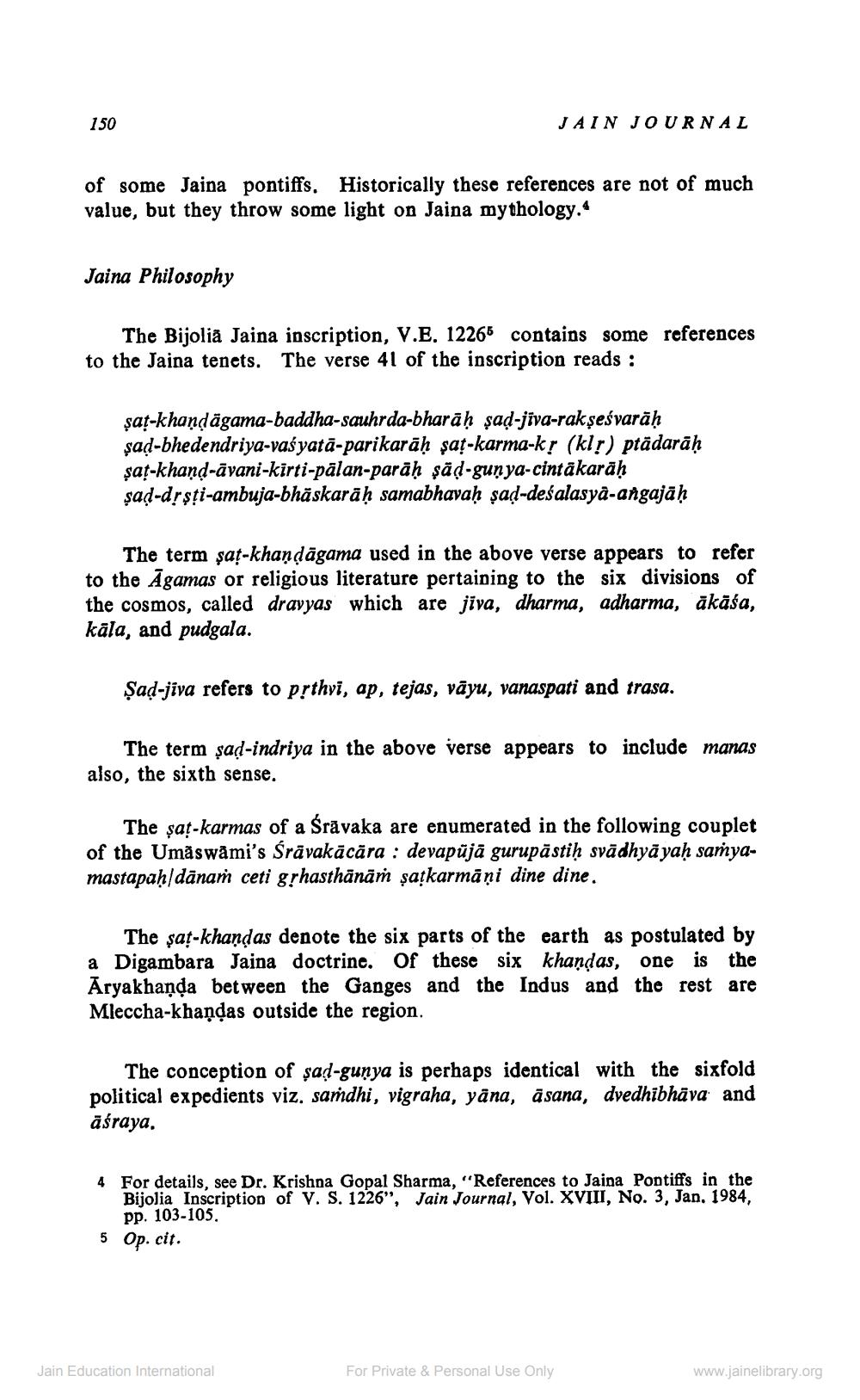________________
150
JAIN JOURNAL
of some Jaina pontiffs. Historically these references are not of much value, but they throw some light on Jaina mythology.
Jaina Philosophy
The Bijolia Jaina inscription, V.E. 12265 contains some references to the Jaina tenets. The verse 41 of the inscription reads :
şaț-khandāgama-baddha-sauhrda-bharāḥ şad-jiva-rakşeśvarāḥ sad-bhedendriya-vas yatā-parikarāḥ sat-karma-kr (klr) ptādarāḥ şat-khand-āvani-kirti-pālan-parāḥ şād-gunya-cintākaraḥ şad-drsți-ambuja-bhāskarāḥ samabhavaḥ şad-deśalasyà-angajāḥ
The term șaț-khandāgama used in the above verse appears to refer to the Āgamas or religious literature pertaining to the six divisions of the cosmos, called dravyas which are jiva, dharma, adharma, ākāśa, kāla, and pudgala.
Şad-jiva refers to prthvi, ap, tejas, vāyu, vanaspati and trasa.
The term sad-indriya in the above verse appears to include manas also, the sixth sense.
The șat-karmas of a Śrāvaka are enumerated in the following couplet of the Umåswami's Śrāvakācāra : devapūjā gurupāstiḥ svādhyāyaḥ samyamastapah/dānaṁ ceti grhasthānāṁ șațkarmāņi dine dine.
The sat-khandas denote the six parts of the earth as postulated by a Digambara Jaina doctrine. Of these six khandas, one is the Aryakhanda between the Ganges and the Indus and the rest are Mleccha-khaņdas outside the region.
The conception of şad-gunya is perhaps identical with the sixfold political expedients viz. samdhi, vigraha, yāna, asana, dvedhibhāva and āśraya.
4 For details, see Dr. Krishna Gopal Sharma, "References to Jaina Pontiffs in the
Bijolia Inscription of V. S. 1226", Jain Journal, Vol. XVIII, No. 3, Jan. 1984,
pp. 103-105. 5 Op. cit.
Jain Education International
For Private & Personal Use Only
www.jainelibrary.org




